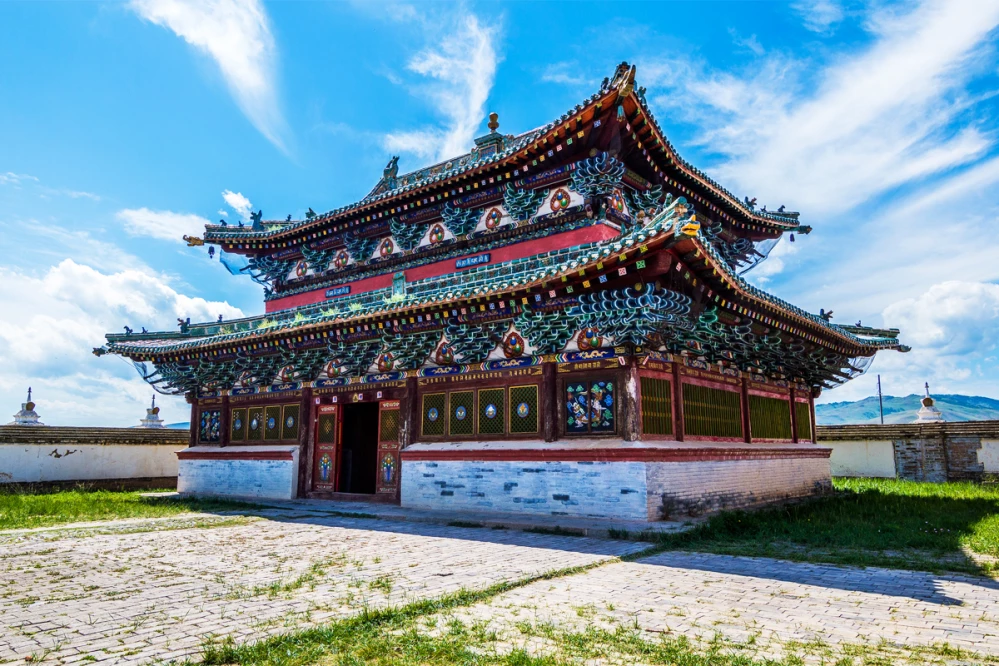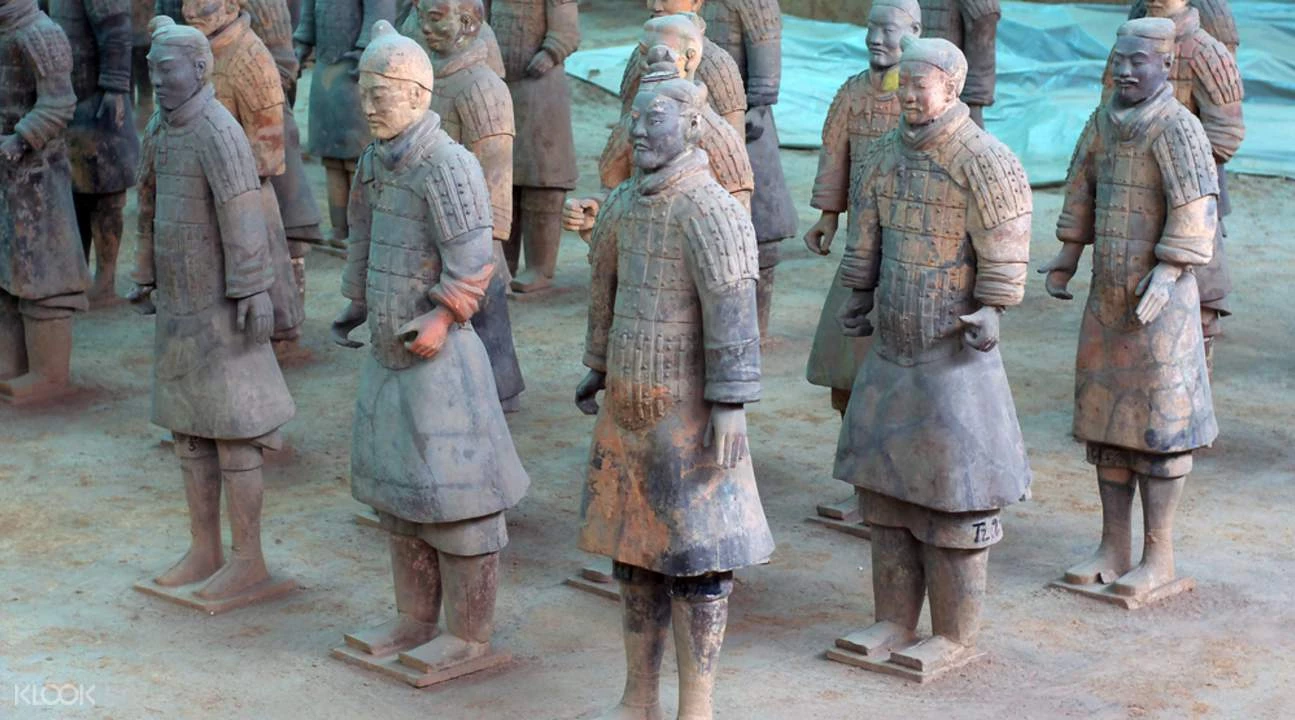
China
Region map
General information
The World’s Richest Breadth of Culture
China is one of the Four Ancient Civilizations, with a history of over 3,000 years. It boasts the world’s richest breadth of culture. China’s language supersedes others in originality and complexity. Kung fu and tai chi similarly surpass karate, taekwondo, and Thai boxing. Also consider China’s food and tea cultures, Chinese medicine, poetry, calligraphy, opera, costume, festivals, and porcelain, before even considering the hundreds of ethnic minorities.
Most Impressive Ancient Heritage
China’s awesome and monumental ancient treasures exceed all other countries for size and number — from ancient palaces to the Great Wall, city walls, buried armies, canals, pagodas, temples, and giant Buddhas.
Most Varied and Spectacular Natural Wonders
As far as natural beauty goes, China goes bigger and more-varied and spectacular than any country in the world, if you count everything.
For example, the legendary Yellow Mountains, with their seas of cloud and charismatic rocks and pines, the rainbow lakes of Jiuzhaigou, Pandora’s floating pinnacles in Zhangjiajie, Guilin’s charming karst, hikers’ most-loved gorge — Tiger Leaping Gorge, and the world’s highest and most majestic plateau in Tibet.
The World’s Greatest Variety of Cuisine
Chinese food is famous worldwide. However, it’s doubtful you’ll discover the delights of Chinese food, and sample its surprising variety of ingredients, until you try it in China.
Each region has its own unique dishes. Some specialties you should try are Beijing roast duck, Shanghainese soup dumplings, spicy hotpot in Chengdu, rice noodles in Guilin, and dim sum in Hong Kong.
Fascinating Ethnic Cultures and Customs
There are 55 ethnic minorities in China and over 500 people groups, practicing a multitude of different cultural customs.
Four major places to experience colorful minority culture are Yunnan, Guilin, Guizhou, and Tibet:
-
Go to Lugu Lake in Yunnan to explore “the world’s last matrilineal society” — the Mosuo people.
-
See the Zhuang people’s traditional wooden stilted houses and record-breaking long-haired Yao women, and try local bamboo-tube rice in Guilin’s Longji Rice Terraces.
-
Visit a Miao village, hear their mountain songs, and see their silver crowns and a traditional way of making paper from trees in Guizhou.
-
Walk through Lhasa’s pilgrim streets and mountain monasteries to meet the devout people of Tibet.
Let's discover China with Adventure Asia!
China itineraries
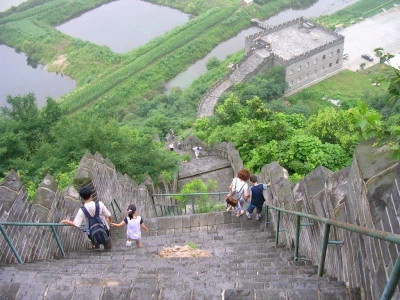
Great Wall Hiking In 3 Days
Discover one of the Seven New Wonders of the world on this private 3-day hiking adventure along the Great Wall of China, including accommodation and meals. Hike along famous sections of the UNESCO-listed wall at Gubeikou, Jinshanling, and Simatai, and escape the crowd as you visit nearby villages and discover sections of the original wall. Covering between 4 and 10 miles (6 and 16 km) each day, the hikes are moderate and a backup vehicle is available en-route.

Tibet Adventure Tour
From modern Beijing, travel back in time across scenic countrysides to Tibet on this well-packed overland adventure. Witness the splendor of the Potala Palace and the majesty of remote monasteries and then celebrate the stunning overland journey to Kathmandu. Wake up to views of Everest and enjoys a window into the heart of this remote land. A local guide and Chief Experience Officer will show you to the region’s hidden gems and make sure your trip burns brightly in your memory long after you’ve climbed down from the roof of the world.
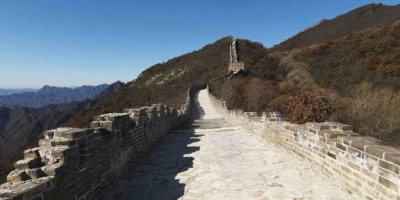
Highlights of Tibet Tour
Discover the highlights of Tibet- the rooftop of the world, locked away in its Himalayan fortress! Discover enchanting Lhasa – home to the famous Potala Palace and Jokhang Monastery, the spectacular Yam Drok Lake, Gyantse’s kumbum, Tashilunpo Monastery in Shigatse and Yumbulakhang, the oldest palace in Tibet.
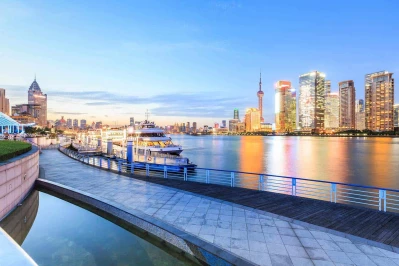
Exploring Beijing To Hong Kong Route
China really does have it all- tranquil countryside full natural scenery and hiking trails, supercities boasting incredible, and historic, artistic and cultural discoveries to make at every turn. Get acquainted with this country’s complexity and contrasts with this fascinating lonely planet experience that will have you walking the Great Wall, trekking through the Longji rice terraces, idling the hours away in serene Hongcun, drifting along the Li River and living it up in Hong Kong. Jam-packed with color and culture, China will astonish you with the levels of diversity throughout the country.

Explore A Wild China Tour
Discover the many different parts of China, all in one trip! We carefully selected all the must-see highlights of China for you to explore the soul of this ancient mysterious country. Indulge in the natural beauty, marvel at the rich culture and be awed by the incredible history. The Yangtze river cruise is an experience you can’t miss and seeing cute pandas up close and personal will be a lifelong memory.
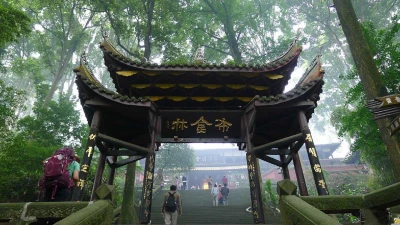
Essential China Tour
Encounter the essence of China in all its wonderful diversity- climb the Great Wall and stare down the Terracotta Warriors before heading down South on this tour of China’s cultural and natural highlights. Rest your gaze on the giant Buddha of Leshan and explore ancient mountainside monasteries at Emei Shan, then float down the world-famous Three Gorges of the Yangtze River before stepping out to experience the vibrant rural life and stunning scenery of Yangshuo. This adventure offers a great combination of must-see highlights and free time to explore on your own.
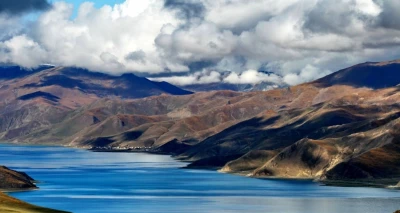
Tibet Encompassed
This 14 days golden tourist route in China and Tibet, with highlights of a once-in-a-lifetime Tibet tour by Tibet train through Qinghai-Tibet railway, the sky road in the world, and a relaxing Yangtze River cruise, will take you to the most beautiful scenery in China and Tibet. In the meantime, you will experience stunning diversity and contrasts of ancient tradition and modern fashion, witness the rapid growth in the golden triangle cities.
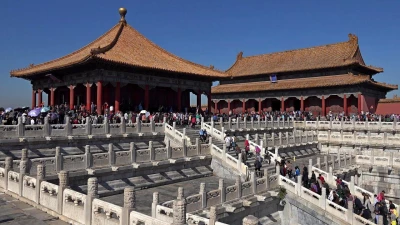
Gourmet China
During your culinary tour in China, all you need are chopstick skills and our expert guides who scoured this mysterious place for the best regional cuisines. Eat hairy crab and learn how to cook Xiao long bao in your cooking classes in Shangai. Visit China’s most famous tea plantations Dragon Well, in the picturesque mountains of Hangzhou. Beijing dishes up Peking duck dripping in plum sauce and spicy hotspots on a food tour near the Forbidden City. Enjoy a picnic on a secluded spot on the Great Wall. Food stalls in Sichuan make eyes water with chili-laced pork dishes and peppery tofu. Over 5,000 years of history, stunning landscape and a multitude of regional cuisines make this food vacation a once in a lifetime experience.

China Family Adventure
China is a rare place that looks to the future while embracing its past. Come see where it’s been and where it’s headed on this incredible 12-day adventure through times both ancient and modern. Starting in Beijing, you’ll stop at the Forbidden City, the Temple of Heaven and the Great wall, before departing to Xi’an for a summit with the Terracotta Warriors. Later, enjoy three days in the rugged beauty of rural Yangshuo before winding it all up in bustling Hong Kong. In China, the future and the past are now!
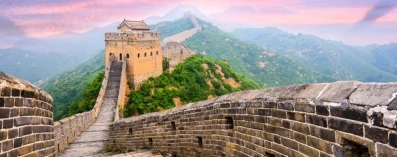
Geat Wall Hiking And Camping
Among its many other attractions, Beijing is lucky enough to have access to some of the most scenic and memorable sections of the Great Wall. This tour package combines all the best Great Wall sections around Beijing into a single, unforgettable hiking extravaganza, including the lakeside Huanghuacheng section, the scenic Mutianyu section, the unrestored Gubeikou section, the steep Jiankou section, and the beautiful Jinshanling section. You will even get a chance to spend a night on the Great Wall, camping in the watchtower on the Gubeikou section. In the morning, you will be able to enjoy breathtaking views of the sun rising over the Wall’s ancient ramparts and the surrounding hills.

Tibet Adventure Tour
From modern Beijing, travel back in time across scenic countrysides to Tibet on this well-packed overland adventure. Witness the splendor of the Potala Palace and the majesty of remote monasteries and then celebrate the stunning overland journey to Kathmandu. Wake up to views of Everest and enjoys a window into the heart of this remote land. A local guide and Chief Experience Officer will show you to the region’s hidden gems and make sure your trip burns brightly in your memory long after you’ve climbed down from the roof of the world.

Great Wall Hiking In 3 Days
Discover one of the Seven New Wonders of the world on this private 3-day hiking adventure along the Great Wall of China, including accommodation and meals. Hike along famous sections of the UNESCO-listed wall at Gubeikou, Jinshanling, and Simatai, and escape the crowd as you visit nearby villages and discover sections of the original wall. Covering between 4 and 10 miles (6 and 16 km) each day, the hikes are moderate and a backup vehicle is available en-route.

Tibet Adventure Tour
From modern Beijing, travel back in time across scenic countrysides to Tibet on this well-packed overland adventure. Witness the splendor of the Potala Palace and the majesty of remote monasteries and then celebrate the stunning overland journey to Kathmandu. Wake up to views of Everest and enjoys a window into the heart of this remote land. A local guide and Chief Experience Officer will show you to the region’s hidden gems and make sure your trip burns brightly in your memory long after you’ve climbed down from the roof of the world.

Highlights of Tibet Tour
Discover the highlights of Tibet- the rooftop of the world, locked away in its Himalayan fortress! Discover enchanting Lhasa – home to the famous Potala Palace and Jokhang Monastery, the spectacular Yam Drok Lake, Gyantse’s kumbum, Tashilunpo Monastery in Shigatse and Yumbulakhang, the oldest palace in Tibet.

Exploring Beijing To Hong Kong Route
China really does have it all- tranquil countryside full natural scenery and hiking trails, supercities boasting incredible, and historic, artistic and cultural discoveries to make at every turn. Get acquainted with this country’s complexity and contrasts with this fascinating lonely planet experience that will have you walking the Great Wall, trekking through the Longji rice terraces, idling the hours away in serene Hongcun, drifting along the Li River and living it up in Hong Kong. Jam-packed with color and culture, China will astonish you with the levels of diversity throughout the country.

Gourmet China
During your culinary tour in China, all you need are chopstick skills and our expert guides who scoured this mysterious place for the best regional cuisines. Eat hairy crab and learn how to cook Xiao long bao in your cooking classes in Shangai. Visit China’s most famous tea plantations Dragon Well, in the picturesque mountains of Hangzhou. Beijing dishes up Peking duck dripping in plum sauce and spicy hotspots on a food tour near the Forbidden City. Enjoy a picnic on a secluded spot on the Great Wall. Food stalls in Sichuan make eyes water with chili-laced pork dishes and peppery tofu. Over 5,000 years of history, stunning landscape and a multitude of regional cuisines make this food vacation a once in a lifetime experience.

China Family Adventure
China is a rare place that looks to the future while embracing its past. Come see where it’s been and where it’s headed on this incredible 12-day adventure through times both ancient and modern. Starting in Beijing, you’ll stop at the Forbidden City, the Temple of Heaven and the Great wall, before departing to Xi’an for a summit with the Terracotta Warriors. Later, enjoy three days in the rugged beauty of rural Yangshuo before winding it all up in bustling Hong Kong. In China, the future and the past are now!

Geat Wall Hiking And Camping
Among its many other attractions, Beijing is lucky enough to have access to some of the most scenic and memorable sections of the Great Wall. This tour package combines all the best Great Wall sections around Beijing into a single, unforgettable hiking extravaganza, including the lakeside Huanghuacheng section, the scenic Mutianyu section, the unrestored Gubeikou section, the steep Jiankou section, and the beautiful Jinshanling section. You will even get a chance to spend a night on the Great Wall, camping in the watchtower on the Gubeikou section. In the morning, you will be able to enjoy breathtaking views of the sun rising over the Wall’s ancient ramparts and the surrounding hills.
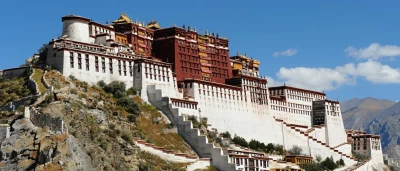
Mount Kailash Tour
Mount Kailash is said to be the mythical mount menu, the center of the universe. It is revered in both Hindu and Buddhist legends, while its location, close to the sources of the four main rivers that flow across the Indian sub-continent, contributes to its mystique. Our adventure includes a weeklong journey from Lhasa across the vast Tibetan plateau. We plan to reach mount Kailash at the time of the Saga Dawa festival when many thousands of pilgrims from throughout Tibet gather to pay homage to the mountain. After the celebrations, we will undertake a three-day trek or Kora, around mount Kailash, with inspiring views of one of the world’s most iconic mountains, before the drive back to Lhasa and on to Kathmandu.
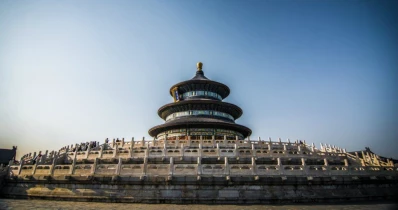
Discover China Tour
The improvement and integration of air and rail services in China have enabled this arrangement, combining the great cities (Beijing, Xi’an, and Shangai) with cruises through the dramatic Yangtze Gorges and the stunning scenery of the Li River. Home to the ‘Lat Emperor’ and the nation’s capital, Beijing’s greatest treasures are revealed at the Imperial Palace in the Forbidden City and the Summer Palace. The Great Wall was initiated by the first Emperor and revived during the Ming Dynasty against the invading Mongols. In Xi’an, the life-size Terracotta Warriors stand in formation, with no two faces alike. Sheer cliffs and steep, rugged mountains rise on either side of the turbulent, misty Yangtze, creating one of nature’s most marvelous sights. The river scenes are enlivened by stories and legends and encapsulated by poets and painters, immortalized in particular by the Tang Dynasty.
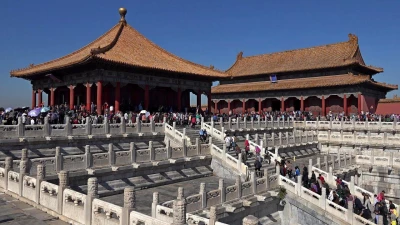
Highlights Of China
See the highlights of China on this golden route of her key sites from Beijing’s Great Wall, Forbidden City and charming hutong neighborhoods to the Terracotta Warriors in Xi’an, and the modern bustle of Shangai, dine on delectable Chinese cuisine, stay in a stunning accommodation, take walking tours, travel by Pedicab, marvel at the ancient emperor tombs, take in the charm of Suzhou, once the ‘Vernice of the East’, have time for shopping and independent activities, and plenty more.

China World Hotel, Beijing
China World Hotel, Beijing is ideally located in Beijing’s central business district (CBD) and is attached to one of the larger malls in Beijing, the China World Mall.
The hotel is the gateway to your historical exploration of the capital city, such as the Great Wall, Tiananmen Square, Forbidden City, Temple of Heaven, hutongs, Houhai Bar Street, Jing Shan, Qianmen and Beihai Park.
China World Hotel, Beijing
China World Hotel, Beijing is ideally located in Beijing’s central business district (CBD) and is attached to one of the larger malls in Beijing, the China World Mall.
The hotel is the gateway to your historical exploration of the capital city, such as the Great Wall, Tiananmen Square, Forbidden City, Temple of Heaven, hutongs, Houhai Bar Street, Jing Shan, Qianmen and Beihai Park.

Grand Hyatt Beijing
Located on Wangfujing, within walking distance of The Forbidden City and Tiananmen Square, Grand Hyatt Beijing is part of Oriental Plaza with direct access to the adjacent shopping mall. Blending both western and oriental traditions encompassing contemporary design and classic standards of service and excellence, our hotel allows you to experience Beijing in our own way.
Grand Hyatt Beijing
Located on Wangfujing, within walking distance of The Forbidden City and Tiananmen Square, Grand Hyatt Beijing is part of Oriental Plaza with direct access to the adjacent shopping mall. Blending both western and oriental traditions encompassing contemporary design and classic standards of service and excellence, our hotel allows you to experience Beijing in our own way.
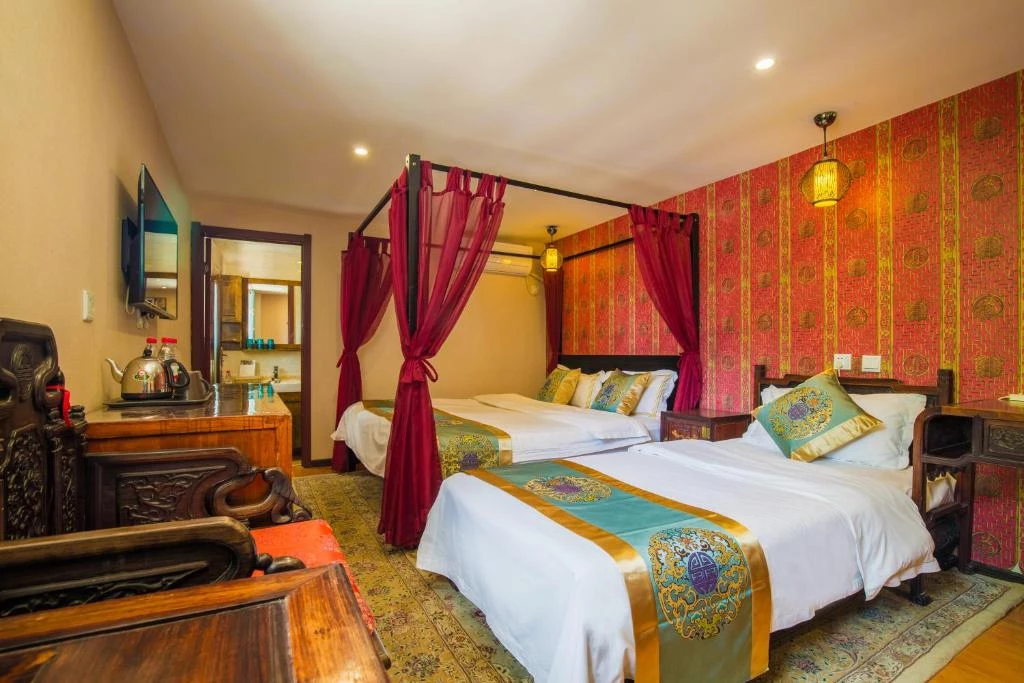
Beijing Rong Courtyard Boutique Hotel
Beijing Rong Courtyard Boutique Hotel is located in Dongcheng district and offers views of Jingshan Park. Business travellers will appreciate conveniences like free Wi Fi throughout the venue and access to a business centre and a xerox.
The accommodation is located 2 km from Lama Temple. The hotel lies within a 10-minute drive from The Palace Museum. This property is a short drive away from Tiananmen Square.
Guests can enjoy European, international and Scandinavian meals at The Georg within 5 minutes' walk of the venue. The accommodation is set a 5-minute walk to Shichahai tube station.




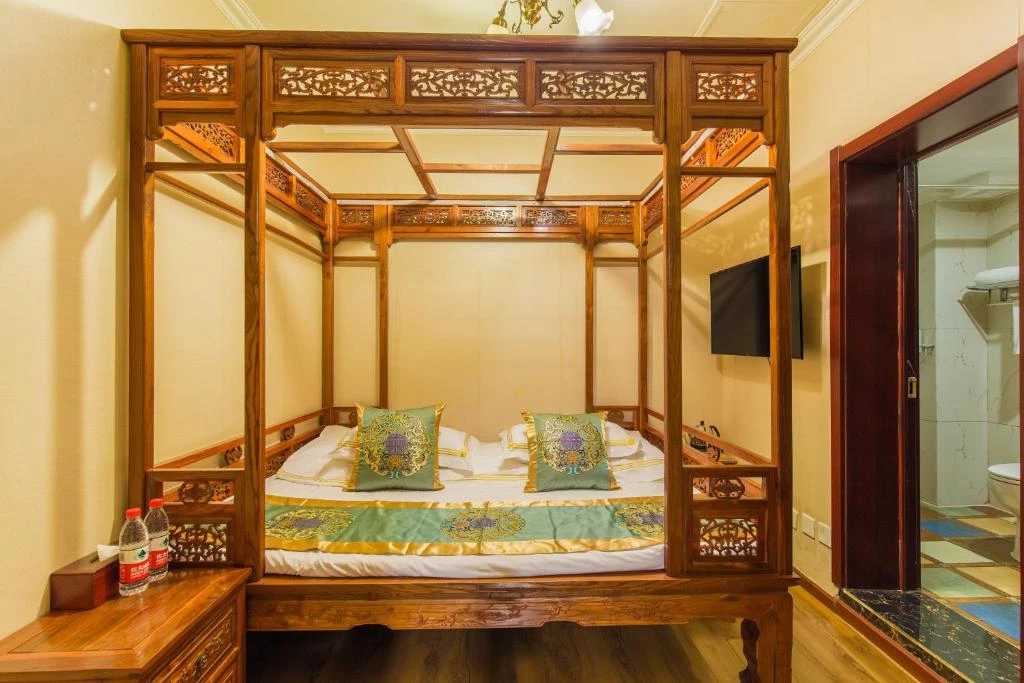
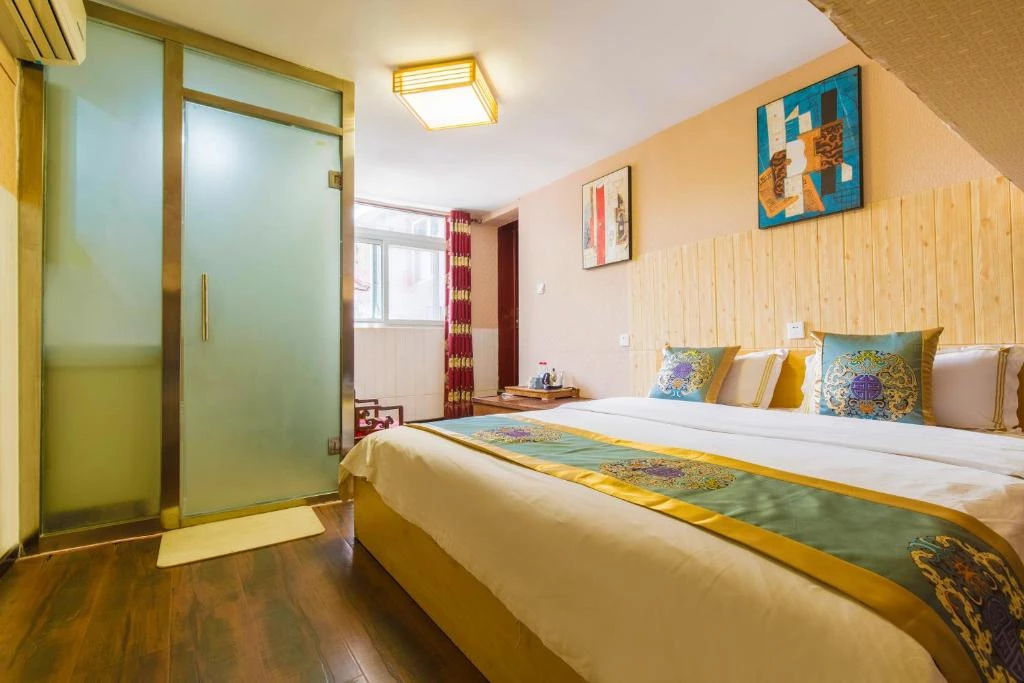
Beijing Rong Courtyard Boutique Hotel
Beijing Rong Courtyard Boutique Hotel is located in Dongcheng district and offers views of Jingshan Park. Business travellers will appreciate conveniences like free Wi Fi throughout the venue and access to a business centre and a xerox.
The accommodation is located 2 km from Lama Temple. The hotel lies within a 10-minute drive from The Palace Museum. This property is a short drive away from Tiananmen Square.
Guests can enjoy European, international and Scandinavian meals at The Georg within 5 minutes' walk of the venue. The accommodation is set a 5-minute walk to Shichahai tube station.
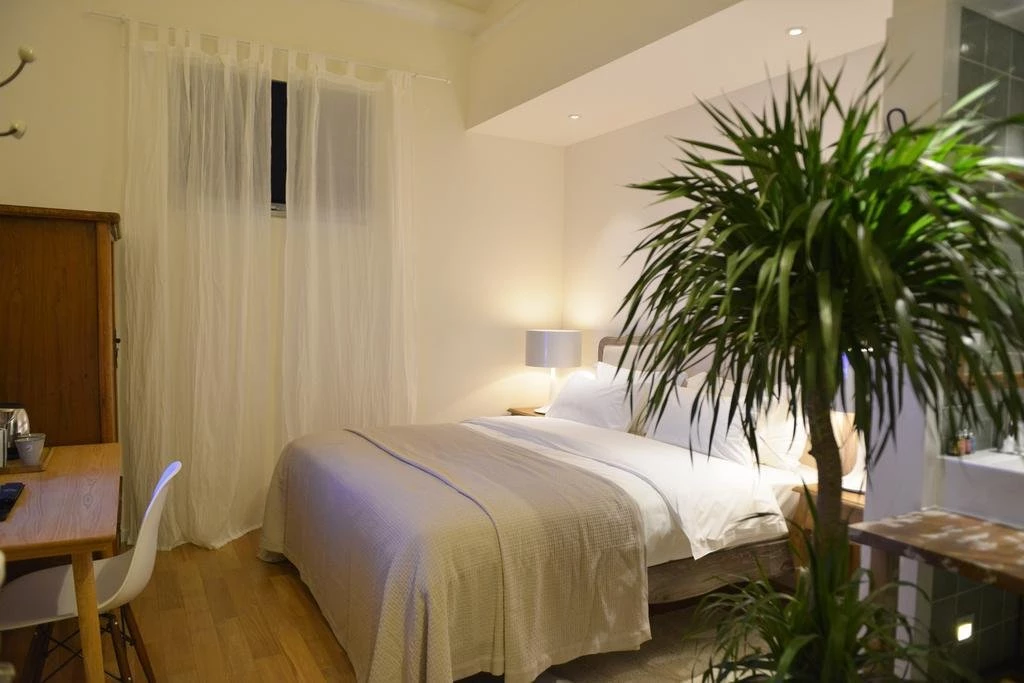
Peking Garden Boutique hotel - Beijing
For flower fanatics, the pretty Peking Garden Boutique Hotel would be a paradise for you in this historic city.



Peking Garden Boutique hotel - Beijing
For flower fanatics, the pretty Peking Garden Boutique Hotel would be a paradise for you in this historic city.
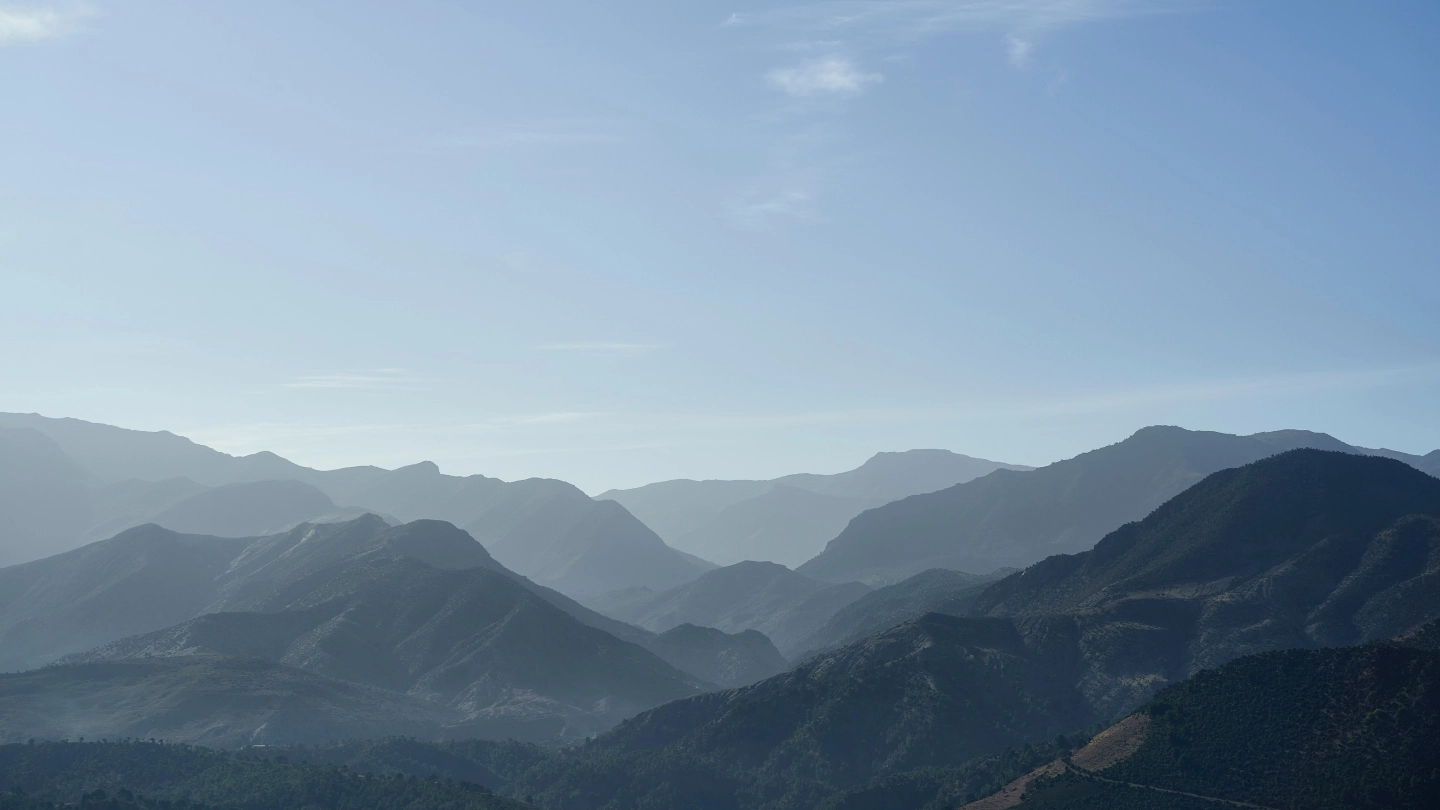
Why Adventure Asia
The company aims to serve soft/medium vacation options to the experienced adventure customer seeking uniquely styled expeditions, rather than traditional tourist-oriented itineraries that are prevalent.
Event Festival
Browse a month-by-month breakdown of suggested itineraries, seasonal activities, climate considerations and festivals.
North China is in a deep freeze but the south is less bitter; preparations for the Lunar New Year get underway well in advance of the festival, which arrives any time between late January and March.
Spring Festival
The Lunar New Year is family focused, with dining on dumplings and gift-giving of hóngbāo (red envelopes stuffed with money). Most families feast together on New Year’s Eve, then China goes on a big week-long holiday. Expect fireworks, parades, temple fairs and lots of colour.
Harbin Ice & Snow Festival
Heilongjiang’s good-looking capital Harbin is aglow with rainbow lights refracted through fanciful buildings and statues carved from blocks of ice. It’s peak season and outrageously cold.
Yuanyang Rice Terraces
The watery winter is the optimum season for the rice terraces’ spectacular combination of liquid and light. Don’t forget your camera, or your sense of wonder.
Weather and Climate

Northern China Weather
Northern China is a massive region with tremendous variations in climate and weather. Spanning areas like Inner Mongolia, Beijing, and Harbin, this region has temperatures throughout that range from sub-zero during the winter months to sweltering and humid during the summer.
While it’s hard to make generalizations about such a large area, the climate is generally continental, experiencing dry, freezing winters and summers that are warm with lots of rain. During the winter months, this area is influenced by cold air from nearby Siberia, while the summer is monsoon season. Outside of the summer months, northeast China is mostly dry. The region is typically very sunny, experience on average 2,500 hours of sunshine each year.
Winter in Northern China
In Northern China, the winter is long and cold, lasting from late November, all the way through March. Temperatures are often below zero, and you’ll likely see plenty of snow, especially if you visit the far north.
Summer in Northern China
Summer sees the opposite extreme in temperatures. Don’t think that because it has cold winters, the northern part of China has cool summers. Unfortunately, that’s not the case. It can be scorching and very humid during the summer months. Summer lasts from May through the end of August, but it can still be warm through September.
Spring in Northern China
Spring is a good time for travel because the climate is much milder than in winter and summer. While it’s true that spring can be rainy, you won’t find the extreme temperatures, and therefore sightseeing can be much more enjoyable. In the far reaches of Northern China, you might still experience snowy conditions, but cities with more humid climates, like Beijing, will generally be pleasantly warm.
Fall in Northern China
Fall is a favorite time to travel in China. The weather is usually pretty glorious in the north, you have a number of opportunities to see fall foliage. China celebrates National Day in the early part of October, and you might want to avoid that. Domestic travel is hectic during that October break, and prices can go up, and crowds are much more significant at famous sights.
Central China Weather
Central China covers a lot of what the normal visitor will experience in China. You’ve got major travel cities like Suzhou, Hangzhou and Shanghai. There’s Qingdao and Chongqing as well as Anhui, Henan and Hubei Provinces.
Chances are, while you’re traveling, you’ll end up spending a decent amount of time in Central China so it’s good to know what the weather will be like. Generally speaking, it’s extreme in summer but mild for the rest of the year. You can experience a lot of rain throughout the year in Central
South and Southwest China Weather
Southern and Southwestern China are two large and exceptionally diverse regions, both in population, weather, and culture. Many of China’s largest cities are included in this classification, including Guangzhou, Chengdu, and Xiamen.
In general, China’s southern provinces are wetter with warmer temperatures than northern neighbors. Winter, which runs from January through March, is short but typically very cold, while April through September is the rainy season when temperatures and humidity peak. Along the southeastern coast, in Fujian and Guangdong, typhoon season lasts from July through September.
Autumn is the best time to visit Southern China because of the mild climate and break in humidity. Winter can also be beautiful in the far south as it will not be frigid for long and you can enjoy outdoor activities.
Winter in Southern and Southwestern China
Winter in Southern China is much more bearable than northern cities, where temperatures often fall below freezing. While you won’t experience that in this part of the country, it can get chilly and drizzly in some cities. This is a great time of year to visit some of the milder areas in southern China, such as Hainan and Yunnan. Temperatures here are still relatively balmy and most days are clear.
Summer in Southern and Southwestern China
The summer months are peak travel season in China, but in the southern part of the country, they can be quite miserable. While some cities, like Kunming, never get too hot, others are warm and extremely muggy during the summer. The humidity in many parts can be unbearable and excessive rain is part of everyday life. If you must visit during the summer, Hainan isn’t a bad idea—at least you can hit the beach if it gets too warm.
Fall in Southern and Southwestern China
Fall in southern China is a beautiful season. Temperatures are cooler, and summer’s rain has moved on until next year. You might experience more massive crowds in early October due to Chinese holidays, but in general, this an excellent time to visit for good weather and beautiful fall colors.
Spring in Southern and Southwestern China
Spring can be a great time to visit southern China. Many parts of the region are still dry, as monsoon season hasn’t begun yet, and temperatures are generally pleasant. You’ll find good weather wherever you go, and much of spring is an off-peak time which means it’s also easier to find good deals on accommodations and tours.
Northwest China Weather
The northwestern part of China becomes more like Central Asia than Eastern Asia. The climate is extremely arid and dry, but the terrain is some of the most beautiful in China. It is here that the historic Silk Road snaked from its Eastern terminus at Xi’an across the mountains and deserts through Central Asia an on to Europe. Travelers will feel the extremes of Chinese weather when traveling here.
Winter in Northwest China
The region gets the most extreme weather during winter. Temperatures drop to way below freezing, and some areas even close for the season. For example, tourist hotels don’t operate from the end of October through April along the Karakoram Highway in Xinjiang, and you’d be miserable looking at the Buddhist paintings inside the Mogao caves in December.
Spring in Northwest China
Spring is undoubtedly a milder time of year but it’s still going to feel very chilly until late May. Things in the region green up quite a bit, though, and the tourists are few and far between so spring is an excellent time to travel to Northwest China.
Summer in Northwest China
Summer is high season in the regions. It is generally hot and very dry. There is very little rainfall here in summer months, and daytime temperatures can get above 100 degrees Fahrenheit (37 degrees Celsius). The nighttime temperatures drop radically with the sunset so evenings can be cooler and very pleasant. Northern Gansu (Silk Road Hexi Corridor and Dunhuang) in August is delightful.
Fall in Northwest China
Fall is also an excellent time to go, although depending on when you travel, you might be getting into the late season (some places close to tourists after the October break). Xinjiang in October is quite lovely: Warm and comfortable during daytime sightseeing, but cooler in the evening.
Travel FAQs
Essential Information
The first thing that strikes visitors to the country is the extraordinary density of its population. In much of China, villages, towns and cities seem to sprawl endlessly into one another along the grey arteries of busy expressways. Move to the far south or west of the country, however, and the population thins out as it begins to vary: indeed, large areas are inhabited not by the “Chinese”, but by scores of distinct ethnic minorities, ranging from animist hill tribes to urban Muslims. Here, the landscape begins to dominate: green paddy fields and misty hilltops in the southwest, the scorched, epic vistas of the old Silk Road in the northwest, and the magisterial mountains of Tibet. While travel around the country itself is the easiest it has ever been, it would be wrong to pretend that it is an entirely simple matter to penetrate modern China. The main tourist highlights – the Great Wall, the Forbidden City, the Terracotta Army and the Yangzi gorges – are relatively few considering the vast size of the country, and much of China’s historic architecture has been deliberately destroyed in the rush to modernize. Added to this are the frustrations of travelling in a land where few people speak English, the writing system is alien and foreigners are sometimes viewed as exotic objects of intense curiosity – though over-all you’ll find that the Chinese, despite a reputation for curtness, are generally hospitable and friendly.
Getting There
China is served both by numerous major international flights to most countries of the world and a host of domestic regional airlines. At present, there are more than 200 airports in China that travelers can take flight to many cities of China, including Beijing, Shanghai, Chengdu, Xian, Guilin, Lhasa, Chongqing, Kunming, Lijiang, Shangri-La, Hangzhou, Huangshan, Shenzhen, Xiamen, Wuhan, Urumqi, Kashgar, Guiyang, Hohhot, Harbin, etc. Among all the China cities, air traffic within mainland China is often connected through Beijing, Shanghai or Guangzhou. Flights between mainland China and Hong Kong (Hong Kong International Airport) and Macau (Macau International Airport) are considered as International. The following are the major airports in China frequently used by most travelers. Please check the detailed airport information and know how to get to your destinations. Beijing Capital International Airport Shanghai Pudong International Airport Shanghai Hongqiao International Airport Chengdu Shuangliu International Airport Xian Xianyang International Airport Kunming Changshui International Airport Guangzhou Baiyun International Airport Shenzhen Bao’an International Airport Hangzhou Xiaoshan International Airport
Getting Around
China by Train Move around China in an awesome way! China has the second longest and busiest rail networks in the world as well as the longest and busiest high-speed rails (HSR) in the world. By the end of 2017, China has constructed over 25,000 kilometers high speed rails to form a vast network which stretches from east to far west, and south to north. Over 500 cities and towns can be reached by advanced and modern high speed bullet trains which are comfortable, secure, efficient, convenient, environment-friendly, and run at speeds of 250km~350km/h. Fuxing trains, the newest generation of China high speed trains, can bring travelers to get to Beijing from Shanghai within 5 hours (1,318km), get to Xian from Beijing within 4 hours (1212 kilometers) and get to Guilin from Guangzhou within 2.5 hours (550km). As more and more destinations having been connected by high speed rails, it is becoming more and more popular to travel China by high speed bullet trains. It is a great treat with comfort and unique experience in China. As the expert of China Train Travel, China Discovery has made fully use of our expertise to help thousands of travelers travel China with our well-designed high speed train tour packages during the past few years. Travelling with China Discovery, you only have to focus on enjoy the vacation as we will take care of all the details, including train tickets booking and collecting, train tickets delivery, pick-up and see-off at railway station, tour arrangements and guide service, etc. Get High Speed Train Ticket First To travel China with high speed train, you should get a train ticket first. Currently, there is only paper ticket. E-ticket is not available. You have to collect train tickets before boarding your train. You can find your train number, seat/sleeper number, ticket fare, seat class, train station as well as your name and passport number (Real-Name Ticket Policy). It is not easy to buy train ticket in China as the official China Railway Website (12306.cn) doesn’t support English, also requires Chinese payment methods. You can only buy ticket at the railway station or let third-party organizations to book for you. The ticket can be booked 30 days in advance. Passport is always necessary for both ticket booking and train boarding. If you travel with children under 120cm, you can buy the discounted Children tickets. China Highway/Road Travel Traveling by highway/road is another choice to reach your destinations in China. Instead of taking flight or high-speed train, travelers who visit by highway/road can appreciate scenery along the way, breathe some fresh air and have a taste of the real China and enjoy close contact with Chinese people. China Discovery suggests you choose the transfer between two destinations with 6-8 hours’ drive in one day. You can either take long distance bus, or use private car. Long-distance Bus In many parts of Yunnan, Sichuan, Tibet, and Guizhou and some more destinations, the railway network is rather undeveloped that travelers should take long distance bus as a form of transport. The tickets for long distance fee are a little expensive than the tickets of normal train. Compared with hiring car for self-driving or using private car, it is more ECONOMIC. Buses leave continuously for most major locations and usually have frequent departures. Long distance bus travel is the way to experience the REAL China. Types of Long-Distance Bus There are two main categories of buses: the sleeper and the seater. The sleepers feature two or three rows of bunk beds, lined up on either side of the aisle and in the middle. The seaters vary greatly and you can adjust the width your seat and make it comfortable. Buy Tickets Travelers can buy tickets at the long-distance bus station, travel agencies, ticket-booking website and even show up at your leisure with no ticket and buy at the time you will board. It is suggested to book tickets in advance, especially during Chinese holidays, like May Day (May 1 to May 3), Chinese National Day (October 1 to October 7) and Chinese Spring Festival and some other public holidays. Otherwise, you’ll get into the crowds and wait for long time and even no tickets to buy at all. Find your Bus Take your tickets with you to pass through the security check. Then, check which ticket entrance you are going to use and check with the staff whether your bus will go or not. If it is a little bit early, you can find a seat in the waiting room to take a rest and wait for the bus. Please make sure you get it very clear which bus and which ticket entrance you are going to use. If you have no idea, find a staff who can speak English and check with him/her. Luggage Bags and suitcases can be stored in the ample belly of the bus before boarding. Small bags can be put at the shelf over your head. Toilet Usually, there is no toilet on long distance bus. The drivers will let the passengers get off to use toilet on the way. The break usually takes 15 minutes. Food & Drink Prepare some snacks and water before you get aboard. You can eat in the bus and waste bags are provided in the front of your seats. Some buses even have hot water dispensers, so be sure to pack a thermos and instant coffee! Otherwise, you can buy some or eat some food during the break. China Waterway China has more than 5800 rivers with a total length of 400,000 kilometers. Among the total length, China has 110,000 kilometers of navigable rivers, streams, lakes, and canals, more than any country in the world. The main navigable rivers are the Yangtze River, Yellow River, Pearl River, Xijiang River, Huangpu River and Beijing-Hangzhou Grand Canal, etc. Taking cruise sailing along the rivers is not only a means of transportation, but also a relaxing and enjoyable way for sightseeing in China. Famous China Waterways & Cruise Yangtze River Cruise Yangtze River, known as Chang Jiang in Chinese, is the third longest river in the world with a length of 6,300 kilometers. It runs from the glaciers on the Qinghai-Tibet Plateau in Qinghai, passing through Tibet, Sichuan, Yunnan, Hunan, Hubei, Jiangxi, Anhui, Jiangsu and Shanghai. Yanhtze River Cruise Travelers can take Yangtze River cruise between Chongqing and Shanghai. The most popular section is between Chongqing and Yichang with 660 kilometers. There are more than 20 luxury cruise ships sailing this section for upstream and downtown. The upstream cruise from Yichang to Chongqing takes 5 days and 4 nights and the downstream cruise from Chongqing to Yichang takes 4 days and 3 nights. No matter you take upstream cruise or downstream cruise, you can enjoy the gorgeous scenery along Three Gorges – Qutang Gorge, Wu Gorge and Xiling Gorge, and marvel at the biggest dam in the world – Three Gorges Dam. Other shore excursions include Fengdu Ghost City, Shibaozhai Pagoda, White Emperor City, Shennv Stream, Tribe of Three Gorges and more sites. Colorful activities in the daytime and at night are arranged to add more fun into your whole cruise. Li River Cruise Li River originates in Mao’er Mountain in Xing’an County, the northeast of Guilin, passing through Lingchuan, Guilin, Yangshuo, Pingle and finally meets Xijiang River, a tributary of Pearl River. It is in a total length of 164 kilometers. Li River flows 83 kilometers from Guilin to Yangshuo. There are some scenic spots along the River, like Elephant Trunk Hill, Daxu Ancient Town, Wangfu Rock, Crown Cave, Mural Hill, Snail Hill, Xingping Town, and Fishing Village. Taking a Li River cruise from Guilin to Yangshuo is the best way to appreciate the beautiful karst landform, thousands of limestone karst mountains sticking out of the ground along the River bank. You’ll feel like sailing through a hundred-mile scroll with numerous green mountains, cliffs, waterfalls, oases and shoals. The whole cruise is about 4.5 hours. Travelers can board the cruise at Zhujiang Pier in Guilin and get off at Yangshuo Pier. The best time to catch the most beautiful side of Li River is from April to October. Beijing-Hangzhou Grand Canal Beijing-Hangzhou Grand Canal is the longest man-made river in the world. Grand Canal, together with the Great Wall and Karez, are called Three Great Project in ancient China. It was listed as the 46th UNESCO World Heritage Site in China in 2014. It starts at Beijing, passing through Tianjin and the provinces of Hebei, Shandong, Jiangsu and Zhejiang to the city of Hangzhou, linking five waterways, including Hai River, Yellow River, Huai River, Yangtze River and Qiantang River. It is with a total length of 1794 kilometers. With a history over 2500 years, the Grand Canal is still in use today. The navigable section is from Hangzhou to Jining. Its course is divided into seven sections, namely the Jiangnan Canal, the Li Canal, the Zhong Canal, the Lu Canal, the South Canal, the North Canal and the Tonghui River. It is recommended to take the Grand Canal cruise when you visit Suzhou. The cruise is about 45 minutes to 1 hour. Travelers board the cruise at Xumen Dock. Huangpu River Cruise Huangpu River is the mother river of Shanghai, flowing through the downtown area and merging into Yangtze River at Wusongkou. With a total length of 113 kilometers, Huangpu River is the last tributary of Yangtze River before it goes into East China Sea. It is divided Shanghai into Pudong and Puxi. The Bund, the old Shanghai, is on the west bank of Huangpu River and Lujiazui Area, the modern Shanghai, is on the east bank of Huangpu River. Travelers can take a Huangpu River cruise to witness the history and development of Shanghai. Board the cruise along the Bund and sail between Nanpu Bridge and Yangpu Bridge. Many sites are standing aside Huangpu River, like Oriental Pearl TV Tower, The Bund, Jinmao Tower, Shanghai World Financial Center and Shanghai Tower. The whole cruise takes about 45 minutes. Travelers can choice to take it in the daytime or at night. Different time will give you different feel.
Visa and Permits
China’s visa-free policies allow nationals of certain countries, including the United States, Australia, New Zealand, and the United Kingdom, to travel to China for stays ranging from 24 hours to 180 days without obtaining a visa if certain requirements are met. 24-Hour Visa-Free Transit Those with a confirmed seat on an international flight, ship, or train transiting through China for another country are exempt from needing a visa provided they stay in China for less than 24 hours without leaving the port. This policy is applicable to passengers of most nationalities at most ports of entry, except the airports in Shenzhen, Yanji, Mudanjiang, and Fuzhou. 72-Hour Visa-Free Transit The passport holders from 53 countries or regions can enjoy the 72-hour visa-free transit policy if transiting via and traveling in the following ports of entry: Xi’an, Guilin, Chongqing, Harbin, and Changsha. 144-Hour Visa-Free Transit The 144-hour visa-free transit has been implemented in Shanghai, Hangzhou, Nanjing, Beijing, Tianjin, Shijiazhuang, Qinhuangdao, Dalian, Shenyang, Xiamen, Qingdao, Wuhan, Chengdu, Kunming, and Guangdong Province, with the addition of Xi’an and Chongqing from December 1, 2019. Passengers from the 53 countries including the United States, Canada, the United Kingdom, Australia, and New Zealand can visit the above areas for 144 hours without visas as long as they meet the 144-Hour Visa-Free Transit policy. Visa-Free Policy in Hong Kong and Macau For most visitors, a visa is not required if traveling to Hong Kong and/or Macau. Hong Kong: The former colony continues its liberal entry policies established by the British government. Citizens of about 160 countries can obtain visa-free entry for durations that range from 180 days to 7 days. See detailed information about Hong Kong visa. Macau: The territory’s policies are more restrictive than those of Hong Kong. British nationals can stay for 6 months. Citizens of about 38 countries including those of the EU, the US, Canada, Australia, New Zealand, Japan, Israel, and South Korea can stay for 90 days. See detailed information about Macau visa. 6-Day Visa Exemption to Pearl River Delta All visitors to Hong Kong and/or Macau are able to visit the surrounding Pearl River Delta visa-free as long as they go with a registered travel agency, such as ours, and meet certain conditions. The group size ranges from three to 40 people including the guide. Visitors are allowed to stay within these cities: Guangzhou, Shenzhen, Zhuhai, Foshan, Dongguan, Zhongshan, Jiangmen, Zhaoqing, Huizhou, and Shantou. Stays within the Pearl River Delta area can last for 6 days or 144 hours for most countries; but for several countries, 21-day tours are possible. 6-Day Visa Exemption for ASEAN Tour Groups to Guilin Tour groups from ASEAN member countries, including Malaysia, Thailand, Indonesia, Vietnam, Cambodia, Laos, Singapore, Myanmar, Brunei, and the Philippines, can visit Guilin for 144 hours without visas as long as they meet the visa-free transit policy. Shanghai 15-Day Visa-Free Policy for Cruise Groups Shanghai has a 15-day visa-free policy for foreign tourist groups entering China via a cruise. You must arrive and depart on the same cruise and be received by a Chinese travel agent at the Shanghai cruise terminal (or Wusong Passenger Center). During the visa exemption period, you are not only allowed to visit Shanghai but also other coastal municipalities (Beijing and Tianjin) and provinces (Liaoning, Hebei, Shandong, Jiangsu, Zhejiang, Fujian, Guangdong, Guangxi, and Hainan). Hainan 30-Day Visa-Free Access No visa is required for staying on Hainan Island for up to 30 days for ordinary passport holders from 59 countries. Group and individual tourists must book their tour through an accredited travel agency approved by China’s National Travel Administration and that’s registered in Hainan Province. The designated countries are: 25 Schengen Agreement Countries: Austria, Belgium, Czech Republic, Denmark, Estonia, Finland, France, Germany, Greece, Hungary, Iceland, Italy, Latvia, Lithuania, Luxembourg, Malta, Netherlands, Norway, Poland, Portugal, Slovakia, Slovenia, Spain, Sweden, Switzerland 15 Other European Countries: Russia, the United Kingdom, Ireland, Cyprus, Bulgaria, Romania, Ukraine, Serbia, Croatia, Bosnia-Herzegovina, Montenegro, Macedonia (FYROM), Albania, Belarus, Monaco 6 American Countries: United States, Canada, Brazil, Mexico, Argentina, Chile 2 Oceania Countries: Australia, New Zealand 11 Asian Countries: Korea, Japan, Singapore, Malaysia, Thailand, Kazakhstan, the Philippines, Indonesia, Brunei, United Arab Emirates, Qatar Citizens of Singapore, Brunei, Japan and Qatar A visa is not required for citizens of Singapore, Brunei, and Japan visiting China for traveling purposes, visiting relatives, and doing business for less than 15 days, but they must enter through designated open ports. Qatar citizens with ordinary passports may stay in China for less than 30 days without a visa. For nationals of these three countries, a visa is required in the following circumstances: (1) An ordinary passport holder stays for more than 15 days. (2) An ordinary passport holder visits for the purposes of study, work, an official visit, settling down, and an interview. (3) A Japanese Diplomatic and Official passport holder. APEC Business Travel Card Holders Asia-Pacific Economic Cooperation (APEC) Business Travel Card holders are entitled to enter China many times within the card’s validity period by showing the passport that corresponds with the card. The card serves as a multi-entry visa valid for 3 years. Each entry must not exceed 2 months. Holders of Aliens’ Residence Permits No visa is required for those who hold aliens’ permanent residence certificates issued by the People’s Republic of China Public Security Bureau (PSB). Foreigners visiting China for study, employment, and working as resident correspondents must apply for Aliens’ Residence Permits with the PSB within a month of arrival in China.
Local Customs
There are 55 minority groups in China, and each has their own traditions and customs. Objects related to worship and ancestors are generally not allowed to be touched. It is good to keep your guide’s instructions in mind or ask for permission before you touch something. There are many Buddhist and Taoist temples in China. If you have the chance to visit them, you should be respectful, even if you believe in another religion or are an atheist. It is important to remove your hat, sunglasses, or sometimes your shoes before entering many temples, and it is not a good move to point at the statues with your finger or to step on the doorsill. Generally, you will not be punished or fined if you don’t show any respect, but it is still suggested that you be respectful. If you are traveling with China Highlights, your itinerary can be customized. You can simply remove the attractions you may not like from your tour.
Events and Festivals
China celebrates many secular and religious festivals, two of which – the Spring Festival (Chinese New Year) and National Day on October 1 – involve major nationwide holidays. Avoid travel during these times, as the country’s transport network becomes severely overloaded. Most festivals take place according to dates in the Chinese lunar calendar, in which the first day of the month is the time when the moon is at its thinnest, with the full moon marking the middle of the month. By the Gregorian calendar used in the West, such festivals fall on a different day every year – check online for the latest dates. Most festivals celebrate the turning of the seasons or auspicious dates, such as the eighth day of the eighth month (eight is a lucky number in China), and are times for gift giving, family reunions, feasting and the setting off of firecrackers. It’s always worth visiting temples on festival days, when the air is thick with incense, and people queue up to kowtow to altars and play games that bring good fortune, such as trying to hit the temple bell by throwing coins. Aside from the following national festivals, China’s ethnic groups punctuate the year with their own ritual observances, which are described in the relevant chapters of the Guide. In Hong Kong, all the national Chinese festivals are celebrated. January North China is in a deep freeze but the south is less bitter; preparations for the Lunar New Year get underway well in advance of the festival, which arrives any time between late January and March. Spring Festival The Lunar New Year is family focused, with dining on dumplings and gift-giving of hóngbāo (red envelopes stuffed with money). Most families feast together on New Year’s Eve, then China goes on a big week-long holiday. Expect fireworks, parades, temple fairs and lots of colour. Harbin Ice & Snow Festival Heilongjiang’s good-looking capital Harbin is aglow with rainbow lights refracted through fanciful buildings and statues carved from blocks of ice. It’s peak season and outrageously cold. Yuanyang Rice Terraces The watery winter is the optimum season for the rice terraces’ spectacular combination of liquid and light. Don’t forget your camera, or your sense of wonder. February North China remains shockingly icy and dry, but things are slowly warming up in Hong Kong and Macau. The Lunar New Year could well be underway, but sort out any tickets well in advance. Monlam Great Prayer Festival Held during two weeks from the third day of the Tibetan New Year and celebrated with spectacular processions (except in Lhasa or the Tibet Autonomous Region). Huge silk thangka (sacred art) are unveiled and, on the last day, a statue of the Maitreya Buddha is conveyed around. Lantern Festival Held 15 days after the spring festival, this was traditionally a time when Chinese hung out highly decorated lanterns. Pingyao in Shanxi is an atmospheric place to soak it up (sometimes held as late as March). Tiancang Festival On the twentieth day of the first lunar month, Chinese peasants celebrate Tiancang, or Granary Filling Day, in the hope of ensuring a good harvest later in the year. March China comes to life after a long winter, though it remains glacial at high altitudes. The mercury climbs in Hong Kong and abrasive dust storms billow into Beijing, scouring everything in their path. It’s still low season. Guanyin’s Birthday Guanyin, the Bodhisattva of Mercy, and probably China’s most popular deity, is celebrated on the nineteenth day of the second lunar month Beijing International Literary Festival Curl up with a good book at the Bookworm cafe for Beijing’s international literary festival, and lend an ear to lectures from international and domestic authors at one of China’s best bookshops. Fields of Yellow Delve into south Chinese countryside to be bowled over by a landscape saturated in bright-yellow rapeseed. In some parts of China, such as lovely Wuyuan in Jiangxi province, it’s a real tourist draw. In colder provinces like Qinghai, you can catch them in summer. April Qingming Festival This festival, also referred to as Tomb Sweeping Day, is the time to visit the graves of ancestors and burn ghost money in honour of the departed. Dai Water Splashing Festival Anyone on the streets of Xishuangbanna, in Yunnan province, is fair game for a soaking. Flush away the dirt, demons and sorrows of the old year and bring in the fresh at the Dai New Year, with its water-splashing festival in Xishuangbanna. Taking an umbrella is pointless. Luoyang Peony Festival Wangcheng Park in Luoyang bursts into full-coloured bloom with its peony festival: pop a flower garland on your head and join in the floral fun. Third Moon Fair This Bai ethnic minority festival is another excellent reason to pitch up in the lovely north Yunnan town of Dali. It’s a week of horse racing, singing and merrymaking from the 15th day of the third lunar month (usually April) to the 21st. Formula 1 Chinese Grand Prix Petrolheads and aficionados of speed, burnt rubber and hairpin bends flock to Shanghai for some serious motor racing at the track near Anting. Get your hotel room booked early – it’s one of the most glamorous events on the Shanghai calendar. May Labour Day A three-day national holiday when everyone goes on the move. Mountain regions, such as Sichuan’s Jiuzhaigou National Park, are in full bloom. For the first four days of May, China is on holiday (Labour Day). Youth Day Commemorating the student demonstrators in Tian’anmen Square in 1919, which gave rise to the Nationalist “May Fourth Movement”. It’s marked in most cities with flower displays. Buddha’s Birthday in Xiahe A fascinating time to enjoy the Tibetan charms of Gansu province’s Xiahe, when Buddhist monks make charitable handouts to beggars and the streets throng with pilgrims. Circling the Mountain Festival On Paoma Shan, Kangding’s famous festival celebrates the birthday of Sakyamuni, the historical Buddha, with a magnificent display of horse racing, wrestling and a street fair. June Most of China is hot and getting hotter. Once-frozen areas, such as Jilin’s Heaven Lake, are accessible – and nature springs instantly to life. The great China peak tourist season is cranking up. Festival of Aurora Borealis The Northern Lights are sometimes visible during the Festival of Aurora Borealis in Mohe in Heilongjiang, in the ultra-far north of China, not far from the Russian border. Even if you don’t get to see the (often elusive) multicoloured glow, the June midnight sun is a memorable experience. Dhama Festival This three-day festival in Gyantse in Tibet kicks off on 20 June for horse racing, wrestling, archery, yak races and more. Shangri-la Horse Racing Festival In mid- to late June, the north Yunnan town of Shangri-la (Zhongdian) lets go of the reins with this celebration of horse racing, coupled with singing, dancing and merriment on the southeastern fringes of Tibet. Tagong Horse Festival Celebrated on varying dates each year based on the Tibetan calendar, this festival on a hilltop overlooking Tagong’s two monasteries and surrounding mountain peaks is a breathtaking display of Tibetan horsemanship. Children’s Day Most schools go on field trips, so if you’re visiting a popular tourist site, be prepared for mobs of kids in yellow baseball caps. Dragon-boat Festival On the fifth day of the fifth lunar month, dragon-boat races are held in memory of the poet Qu Yuan, who drowned himself in 280 BC. The traditional food to accompany the celebrations is zongzi (lotus-wrapped rice packets). Another three-day public holiday. July Torch Festival, Dali Held on the 24th day of the sixth lunar month (usually July), this festival is held throughout Yunnan by the Bai and Yi minorities. Making for great photos, flaming torches are paraded at night through streets and fields, and go up outside shops around town. Naadam Mongolian wrestling, horse racing, archery and more during the weeklong Naadam festival on the grasslands of Inner Mongolia at the end of July, when the grass is at its summer greenest. Dalian International Beer Festival Xinghai Sq in the Liaoning port city is steeped in the aroma of hops and ale and strewn with beer tents in this 12-day celebration of more than 400 international and Chinese beers from a plethora of breweries. August Ghost Festival The Chinese equivalent of Halloween, this is a time when ghosts from hell are supposed to walk the earth. It’s not celebrated so much as observed; it’s regarded as an inauspicious time to travel, move house or get married. Litang Horse Festival Occasionally cancelled in recent years (restrictions on travel may suddenly appear) and also shrunk from one week to one day, this festival in West Sichuan is a breathtaking display of Tibetan horsemanship, archery and more. Qingdao International Beer Festival Slake that chronic summer thirst with a round of beers and devour a plate of mussels in Shandong’s best-looking port town, a former German concession and home of the famous Tsingtao beer label. September Moon Festival On the fifteenth day of the eighth month of the lunar calendar, the Chinese celebrate what’s also known as the Mid-Autumn Festival. Moon cakes, containing a rich filling of sugar, lotus-seed paste and walnut, are eaten, and plenty of spirits consumed. The public get a further three days off. Double Ninth Festival Nine is a number associated with yang, or male energy, and on the ninth day of the ninth lunar month such qualities as assertiveness and strength are celebrated. It’s believed to be a good time for the distillation (and consumption) of spirits. Confucius Festival The birthday of Confucius is marked by celebrations at all Confucian temples. It’s a good time to visit Qufu, in Shandong province, when elaborate ceremonies are held at the temple there. October National Day Another week-long holiday when everyone has time off to celebrate the founding of the People’s Republic. TV is even more dire than usual as it’s full of programmes celebrating Party achievements. Miao New Year Load up with rice wine and get on down to Guizhou for the ethnic festivities in the very heart of the minority-rich southwest. Kurban Bairam (Gǔěrbāng Jié) Catch the four-day festivities of the Muslim festival of sacrifice in communities across China; the festival is at its liveliest and most colourful in Kashgar. November Most of China is getting pretty cold as tourist numbers drop and holidaymakers begin to flock south for sun and the last pockets of warmth. Surfing Hainan The peak surfing season kicks off in Ri Yue Bay (Sun and Moon Bay) in Hainan, where the island’s best surf rolls in. Hordes of Chinese flee the cold mainland for these warmer climes. December Christmas This is marked as a religious event only by the faithful, but for everyone else it’s an excuse for a feast and a party.
What will it cost for a…?
Subway ride = 3 RMB Can of soft drink = 3-5 RMB Bottle of beer = 7-10 RMB Basic lunch = 15 RMB Basic rice or noodle dinner 25 RMB Three-course dinner = 80 RMB
Are credit cards accepted widely in China?
Major credit cards are accepted by large hotels, stores and restaurants, but may not be accepted by smaller vendors such and market stalls. Make sure to always carry some cash in case credit cards are not an option.
What is ATM access like in China?
Travellers will be able to access ATMs in China’s large cities and regional centres. Rural and remote areas will have less ATM access so ensure you have other payment modes before venturing out of the city. Not all Chinese ATMs will accept foreign cards.
Is China a safe destination for LGBTQI-travellers?
Equal rights have a long way to go in China. The government heavily censors portrayals of same-sex relationships and, up until 2001, homosexuality was considered a mental illness. That being said, China is a relatively hassle-free destination for LGBTQI travellers who use discretion. People are generally tolerant and homophobic-related violence is incredibly rare. Low-key gay scenes/communities can be found in larger cities like Beijing, Shanghai and Hong Kong. While it’s common for friends of the same sex to hold hands, keep in mind any further displays of affection are frowned upon; this applies to heterosexual couples as well.
What's your refund policy ?
Below is our cancellation and refund policy: 🔸 60 days prior to arrival date: No cancellation charge for the land cost. We guarantee 100% of the land cost back. The airline cancellation fees are applied according to the airline's policy. 🔸 59 - 30 days prior to arrival date: 5% cancellation charge + airfare cancellation fees 🔸 29 - 15 days prior to arrival date: 10% + airfare cancellation fees. 🔸 14 - 8 days prior to arrival date: 40 + airfare cancellation fees. 🔸 7 days prior to arrival date: 100% 🔸 No show: 100% Please note that the domestic flight tickets in the package are non-refundable





